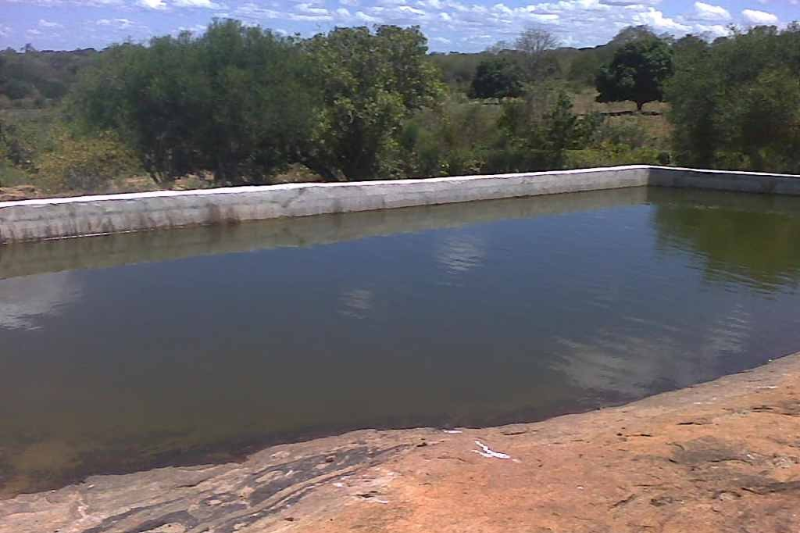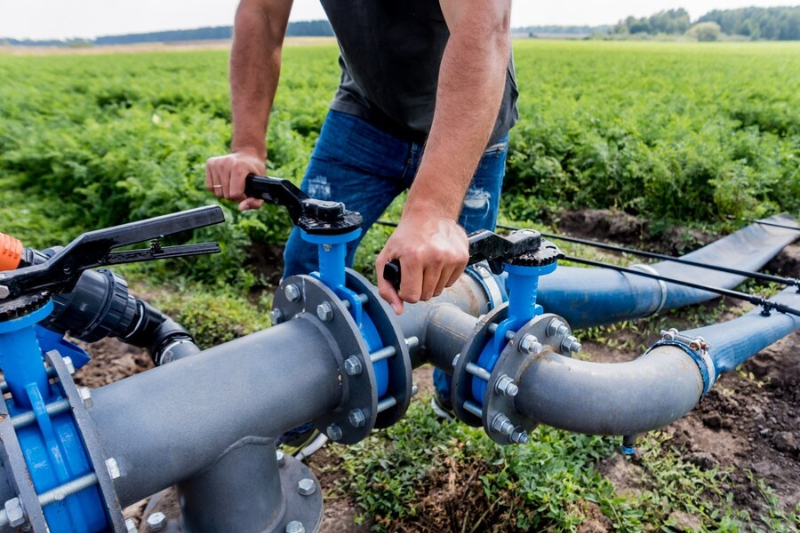Table Of Contents
Water scarcity escalates worldwide, affecting billions of people and countless ecosystems. Given the increasing demands on freshwater resources due to population growth, urbanization, and climate change, innovative and sustainable water collection and conservation solutions are more critical than ever. This article explores various strategies and technologies to enhance water security and sustainability. Continue reading to find out more!
Understanding the challenge
Before delving into solutions, it's essential to grasp the magnitude of the challenge. Water scarcity affects every continent, with around 1.2 billion people living in locations of physical scarcity and many more facing economic water shortage. Climate change exacerbates the situation, altering precipitation patterns, reducing snowpack, and intensifying droughts.
Traditional water collection methods
Traditional water collection methods testify to human ingenuity in adapting to diverse environmental conditions and making the most available water resources. These methods have evolved over centuries, tailored to local climates, topographies, and cultural practices.
Expanding on the traditional rainwater harvesting techniques, we can explore various methods, their applications, and how they can be integrated and improved with modern innovations.
Rooftop rainwater harvesting

Rooftop rainwater harvesting is the most straightforward and widely applicable method. It involves collecting rainwater directly from roof surfaces into gutters, channeling the water into downspouts, and directing it into storage tanks or reservoirs. The simplicity of this system makes it versatile and applicable in both rural and urban settings.
Modern enhancements can include using high-quality, durable materials for gutters and tanks, such as UV-resistant PVC or stainless steel, which improve longevity and water quality. Additionally, incorporating first-flush systems ensures that the initial rainwater, which may contain roof contaminants, is diverted away from the storage tanks, thus improving the collected water quality.
Land surface catchments

Land surface catchment systems collect rainwater from ground surfaces. These areas, such as paved courtyards, fields, or specially constructed catchment areas, can be natural or artificial. The water collected can be used for irrigation, recharging groundwater, or even for direct use after suitable treatment.
Enhancements in land surface catchments include designing more efficient drainage systems to maximize water collection and minimize evaporation losses. Integrating porous paving materials and strategically planting vegetation can improve water quality and reduce runoff.
Rock catchments

Rock catchments are specialized systems that collect runoff from rock faces or rocky outcrops. They are instrumental in arid and semi-arid regions where surface water is scarce, and rainwater quickly evaporates or infiltrates the ground.
Water collected from rock catchments is often high quality and requires minimal treatment before use. Modern adaptations involve the installation of gutters and conduits to direct water more efficiently into storage tanks and using liners or coatings to prevent water loss through seepage.
Enhancements and innovations
Integrating traditional methods with contemporary technologies improves the efficiency and scalability of water collection systems. For instance, solar-powered pumps can distribute collected rainwater across larger areas or to elevated storage facilities, making the system more effective in distributing water where it's needed most.
Innovative technology, such as IoT-based sensors, can monitor rainfall, water levels in storage tanks, and water quality, providing valuable data for optimizing water collection and usage.
Cultural and community aspects
Beyond the technical aspects, traditional water collection methods are highly ingrained in the cultural fabric of many communities. Reviving and adapting these methods contributes to sustainable water management and helps preserve cultural heritage.
Community involvement in designing, implementing, and maintaining water collection systems ensures these initiatives are sustainable and tailored to the community's specific needs and preferences.
Advanced rainwater harvesting systems
Advanced rainwater harvesting systems represent a significant leap forward in managing and utilizing one of our most precious resources: water. These systems incorporate modern technology and innovative designs to optimize rainwater collection, storage, and usage efficiency and effectiveness.
Below, we delve into the components that distinguish advanced systems from their traditional counterparts and explore how they contribute to sustainable water management.

Improved guttering and downspout designs
Modern rainwater harvesting systems have evolved to include guttering and downspouts designed for maximum efficiency and minimal maintenance. These components are engineered to handle high volumes of water, reduce blockages, and minimize water loss.
For example, gutter guards can prevent leaves and debris from entering the system, while innovative downspout designs can enhance water flow and avoid backflow. Materials used in these components are often durable, corrosion-resistant, and food-grade to ensure water quality, with options including stainless steel, PVC, and aluminum.
First-flush diverters
One critical advancement in rainwater harvesting is the integration of first-flush diverters. These devices are vital to improving water quality by diverting the initial flow of rainwater away from the storage tank.
This first water flush typically carries pollutants from the collection surface, such as dust, bird droppings, and leaves. By diverting this flow, the system ensures that the water entering storage tanks is cleaner, reducing the need for treatment before use. Modern diverters are easy to install and maintain, with automatic reset mechanisms for continuous operation throughout the rainy season.
Modular water tanks
Modular water tanks have revolutionized the storage component of rainwater harvesting systems. These tanks can be easily assembled on-site, allowing flexible sizing and configuration to fit available space and storage needs.
Made from materials like high-density polyethylene (HDPE) or reinforced fiberglass, these tanks are durable, resistant to chemicals and UV radiation, and do not leach harmful substances into the stored water. Modular tanks can also be interconnected, enabling scalable storage solutions that can grow with demand.
Underground cisterns
Underground cisterns offer an efficient way to store large volumes of water without occupying valuable surface space. These cisterns are designed to be buried, with access hatches for maintenance and inspection.
The underground placement has several benefits: it reduces the water's exposure to sunlight, minimizes algae growth, maintains a more consistent temperature, reduces the risk of freezing, and preserves the aesthetic of the landscape. Advances in cistern design include leak-proof construction, integrated filtration systems, and pump access ports for easy water retrieval.
Smart technology integration
Modern rainwater harvesting systems increasingly incorporate innovative technologies for monitoring and management. Sensors can track tank water levels and quality parameters and even predict rainfall to optimize water usage.
These systems can be linked to home automation systems or smartphones, allowing users to monitor their system remotely and receive alerts for maintenance needs, such as filter changes or tank cleaning. This integration enhances the user experience, making rainwater harvesting more accessible and manageable.
Water conservation in agriculture
Agriculture swallows more than 70% of the world's freshwater, making it a critical area for conservation efforts. Techniques like drip irrigation and sprinkler systems significantly decrease water usage by delivering water directly to the plant's roots, minimizing evaporation and runoff. Moreover, soil moisture sensors and climate-based irrigation controllers can optimize watering schedules, enhancing water efficiency.

Urban water conservation strategies
In urban areas, water conservation strategies include low-flow fixtures, such as toilets, showerheads, and faucets, significantly reducing household water usage. On a larger scale, green infrastructure, like green roofs and permeable pavements, can manage stormwater more effectively, reducing runoff and increasing groundwater recharge.
Reuse and recycling of wastewater
Wastewater treatment and reuse represent a significant opportunity for water conservation. Technologies ranging from simple constructed wetlands to advanced treatment processes, such as membrane bioreactors, can clean wastewater to a level safe for reuse in agriculture, industry, or even as potable water.
Desalination
Desalination, the method of removing salt from seawater, offers a potential solution to water scarcity in coastal regions. While traditionally energy-intensive, technological advances have led to more energy-efficient methods, such as reverse osmosis, making desalination more viable.
Community-based conservation efforts
Community involvement is required for the success of water conservation initiatives. Educating communities about water-saving practices, involving them in water management decisions, and encouraging the adoption of conservation technologies can lead to more sustainable water use patterns.
Conclusion
Addressing the global water crisis requires a multifaceted approach, incorporating traditional methods and innovative water collection and conservation technologies. Implementing these solutions at various scales, from individual households to entire regions, can significantly secure our water future.
The success of these efforts depends on collaboration among governments, businesses, communities, and individuals, underscoring the universal importance of water conservation for the sustainability of our planet. For more information on water collection and conservation solutions for your roof, contact a professional roofing company.




